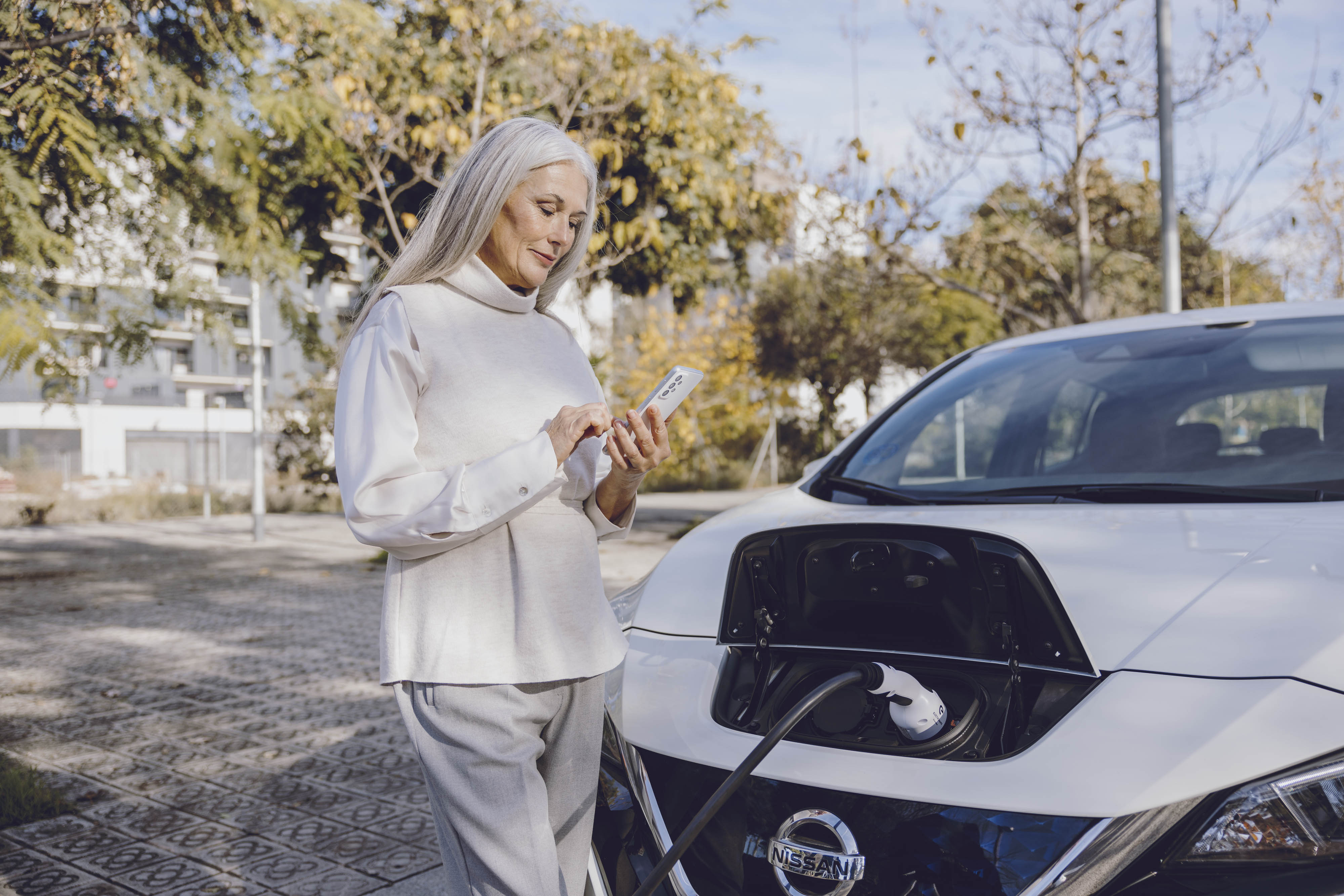Let's find out car registrations by energy source, focusing on seven European countries: Norway, Sweden, the UK, Germany, France, Italy and Spain :
Update
In the first quarter of 2024, we saw electric vehicle sales in europe show a progression in favor of cleaner technologies despite difficulties in Spain and Italy,
Indeed, 2024 began under the banner of innovation and commitment to sustainable development. With increasingly stringent environmental regulations and tax breaks for low-emission vehicles, more and more European consumers are opting for electric vehicles. This can also be felt on the Electromaps side with a increasing user contribution to our charging point map.
Did this progression continue in the second quarter of the year? That's what we'll be looking at in this article:

Norway: no surprise as leader retains title

Unsurprisingly, in this second quarter of 2024, Norway continues to dominate the European EVmarket. Indeed, battery electric vehicles (BEVs) accounted for 77% of sales in Norway, with utotal share of electric vehicles (including plug-in hybrids) at 82.3%. This represents lower figures than last year's 89.2% for the same period, but can easily be explained by the fact that major manufacturers, including BMW, Volkswagen Group, and Tesla, encounteredlogistical difficulties affecting deliveries.
The Volvo EX30 was the best-selling model, followed by the Volkswagen ID.4 and the Tesla Model Y. Sales of internal combustion vehicles fell to just 4% of the market.
Favorable conditions for electric vehicles in Norway are reinforced by incentive policies and a well-developed recharging infrastructure. Popular models focus mainly on SUVs and family vehicles, indicating a preference for spacious, versatile vehicles. Despite logistical challenges, demand for BEVs remains strong, confirming Norway's position as a world leader in the adoption of electric vehicles.
In fact, the government estimates that by 2025, Norway will be the first country to have more electric vehicles on the road than thermal vehicles. The Tesla Model Y continues to dominate the market, being the best-selling model during these periods.
In Sweden: visible difficulties, but nothing alarming

In the first quarter of 2024, have constructed a small decline in EV sales in Sweden, unfortunately this continues in the second quarter. Indeed, lelectric vehicles accounted for 53.6% of sales in Sweden, down from 61.9% the previous year. BEVs took 30.3% of market share, while PHEVs reached 23.2%. Tesla Model Y was the best-selling BEV, followed by the Volvo EX30 and Volvo XC40. New entries included the Renault Scenic and the Peugeot e-3008. Overall vehicle sales were down 12% year-on-year.
BEVs in Sweden are suffering from the removal of purchase incentives, especially affecting cheaper models such as the Peugeot 208 BEV, which costs more than double its combustion version. Despite these challenges, BEV sales remain robust with Tesla dominating the market. New market entries, such as the Renault Scenic and Peugeot e-3008, show continued interest in electric SUVs. Sweden's economic outlook is improving with moderate inflation and a slight drop in interest rates, which could support a recovery in the electric vehicle market.

United Kingdom: slight growth for the better

The UK is up slightly this second quarter 2024! Indeed, while it was pleasing to see a growing market in the 1st quarter of the year, EV sales were a little stagnant, but in this second quarter, lelectric vehicles accounted for 25.7% of UK car sales, up from 23.1% the previous year. Battery electric cars (BEVs) took 17.6% of market share, and plug-in hybrids (PHEVs) 8.0%.
Tesla remains the most popular BEV brand, with the Model Y leading sales. Other successful models include BMW's BMW i4, which is just behind Tesla in terms of market share (12.5% vs. 10.1%), and the Mercedes-Benz EQA and EQB. Overall vehicle sales remain below pre-pandemic levels, underlining the need for incentives to stimulate the market, but we can be pleased to see figures on the rise!
Transition to electric vehicles in Germany slows down

Compared with the rather positive 1st quarter of the year, Germany looks grim in this second quarter 2024, indeed: electric vehicles in Germany accounted for 18.5% of sales, down from 22.9% the previous year. Battery electric cars (BEVs) saw their volume fall by 31% year-on-year, while plug-in hybrids (PHEVs) rose slightly. This decline is attributed to the sudden removal of financial incentives for BEVs in December, the perception of high BEV costs, and the continuing economic recession. Sales of internal combustion vehicles even increased slightly,
In terms of vehicle models, the Volkswagen ID.3 was the best-selling electric car in the quarter, followed by the MG 4. Let's hope that the arrival of other smaller, more competitively-priced models will boost EV sales in the coming months!
France maintains its share of the electric vehicle market despite the end of incentives!

France persists in the second quarter of 2024 indeed, after a positive first quarter, the second is also positive: electric vehicles in France reached a market share of 24.1%, similar to the previous year. Battery electric cars (BEVs) rose to 16.9%, while plug-in hybrids (PHEVs) fell to 7.2%. The removal of incentives for non-European BEVs impacted affordable models, notably the Dacia Spring. Top-selling models include the Peugeot e-208, Renault Twingo, and Renault Megane. The Tesla Model Y, although not eligible for incentives, remains popular.
Changes in incentive policies have affected sales of some models, highlighting the importance of government support in sustaining the electric vehicle market. Despite these challenges, France continues to show strong adoption of BEVs, with a notable preference for domestic brands and some international models.
Thermal vehicle sales continue to decline, indicating a gradual but steady shift towards more sustainable transport options. This transition is crucial to achieving the country's environmental goals and reducing greenhouse gas emissions.

Electric mobility in danger in Spain?

After seeing stagnant sales of electric vehicles and a small slowdown in the overall market in the first quarter of the year, this second quarter closes on a mixed note with a market that's back on the rise but bad news for electric mobility.
Indeed, this second quarter of 2024, private car sales in Spain were up 3.4% on May 2023. Cumulative sales from January to June 2024 reached more than 500,000 units, marking a 6.8% increase on the same period in 2023. But, sales of electric and plug-in hybrid vehicles fell by 11.9%. This slowdown is attributed to the lack of adequate recharging infrastructure , these results lead to concerns regarding the country's decarbonization objectives, requiring faster involvement of administrations to encourage the adoption of new technologies.
In Italy, electric mobility still struggling despite progress on the hybrid side

Green mobility is still difficult to implement in Italy, but this second quarter of the year may give us a glimpse of a start of change in the way we get around the country,
Indeed, although car sales in Italy were down 6.6% on the same period in 2023, cumulative sales from January to May 2024 were up 3.4% on the same period in 2023. Fiat saw its sales fall by 11.8% in May, while Volkswagen and Toyota recorded increases of 3.6% and 4.3% respectively. Sales of electric vehicles fell by 18.3%, but those of hybrids rose by 7.7%. Finally, although gasoline-powered vehicles continue to have a bright future ahead of them (+6.7% increase on 2023) and still account for almost 1 third of the market, sales of diesel vehicles have collapsed, by more than 31.1%.
We can therefore feel that Italy is still giving pride of place to thermal vehicles and having a much harder time with all-electric, the hope of a transition is nonetheless very much present when we note the growing interest of the population in hybrid vehicles and the gradual decrease in diesel vehicles.








.png)
%20(1).png)




.png)


